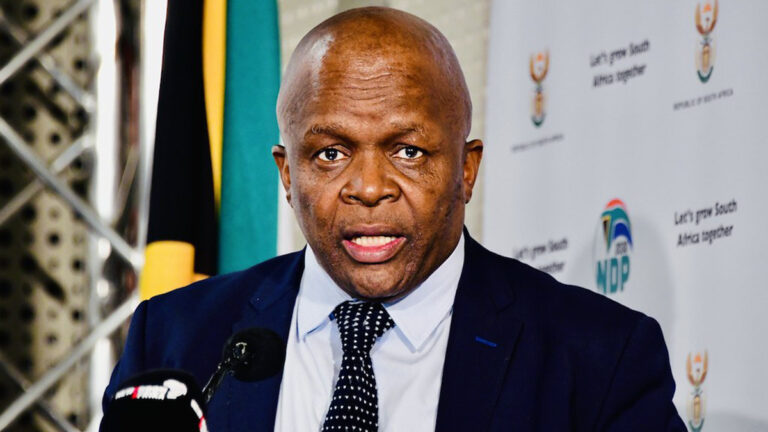Minister of Communications and Digital Technologies Mondri Gungubele;
The South African government has set a target of connecting 5.5 million households in townships and rural areas to WiFi.
This goal was unveiled this week by Minister of Communications and Digital Technologies Mondri Gungubele during the joint debate on the State of the Union Address (SONA).
Rural areas and townships across South Africa have historically remained unconnected, shunned by telecommunications companies as they were deemed commercially unviable.
Speaking at the SONA debate on Tuesday, Gungubele said that “internet connectivity and penetration rates in the country have improved significantly”, from just 21.1% in 2011 to 79% in 2022, and that the world is rapidly changing due to digital. He said that public awareness has improved. technology.
He said this improvement was due to work being done through the SA Connect broadband connectivity project. This project is dedicated to bridging the digital divide by providing WiFi access to communities and ensuring universal access to the internet.
SA Connect is the government’s national broadband project, underway since 2013, to ensure universal access to broadband services for all South Africans, with priority given to rural and underserved areas. The purpose is
Phase 1 of SA Connect was aimed at connecting government facilities and phase 2 of the project was aimed at providing continuous internet access.
The government launched the second phase last year with the aim of providing core and access network infrastructure to enable broadband connectivity to community WiFi hotspots that connect homes.
The Department of Communications and Digital Technologies (DCDT) revised the targets for the second phase in November.
According to the Adjusted National Expenditure Estimates (AENE) document, DCDT is currently considering connecting 882,000 households as part of its broadband plan for the 2023/24 financial year.
This is below the projected target of 1.9 million households published in the 2023 National Expenditure Estimates (ENE). ENE revealed that the ministry is targeting a further 3.8 million households to be connected during the 2024/25 financial year.
AENE said the change in targets for the 2023/24 financial year was due to delays in its governance structure. “This delayed the disbursement of funds and reduced the budget.”
The AENE is a document released in conjunction with Finance Minister Enoch Godongwana’s 2023 Medium-Term Budget Policy Statement, which was presented in Parliament in November.
In his speech, Gungubele said the government will continue to connect rural and urban areas, with the goal of reaching 5.5 million households with WiFi hotspots over the next three to four years.
He further said that the government will connect 1.5 million households with WiFi hotspots by December 2024 and 747,000 households with 4,250 WiFi hotspots by the end of this fiscal year.
“To date, we can report that we have achieved coverage of 361,000 households with 2,502 WiFi hotspots. The work has been completed and will continue. This includes 76 small and medium-sized internet service providers. This will create 4,500 direct jobs and many more indirect downstream jobs and opportunities,” Gungubele said.
He noted that the government has released more than 700MHz of spectrum for use by mobile operators, which will connect public institutions and deploy 4G and 5G technology across the country.
The government believes that the availability of spectrum will pave the way to affordable, high-speed internet access for all.
“Through collaboration with the private sector, all eight metros have so far been connected to fiber optics and are expanding to more towns. We are committed to implementing the recommendations of the Presidential Commission on the Fourth Industrial Revolution. As part of this, we have embarked on several digital infrastructure projects to ensure transformation through access in a changing world,” the Minister noted.
He said the Cabinet approved the Next Generation Spectrum Policy for Economic Development on November 25, 2023.
The policy aims to support spectrum allocation and licensing for fixed mobile, broadcasting, aviation and maritime, research and development, community access, and other related industries.
It also aims to promote equity and fair distribution to contribute to the transformation of the sector and the accessibility of digital connectivity even in remote areas of the country.
The purpose of this policy is to address the gaps and limitations identified in the 2016 National Information and Communication Technology White Paper and to provide for the amendments to the relevant provisions of the Electronic Communications Act 2005 (Act No. 36 of 2005), which: Contains the contents of
- Unclear roles and responsibilities between ministers and authorities (ICASA) contributed to inefficiency.
- Gaps in spectrum management regime.
- A monopolistic spectrum regime that benefits a few large players.
- Inefficiencies in extending broadband access to rural, remote, and underserved areas.
“Working with mobile phone companies, we will connect over 21,878 public basic education institutions, health centers and clinics, public libraries, and offices/residences of traditional leaders to the internet over the next three years.
“4G connectivity is expanding to county and rural areas under democracy.” [meaning: of] Tata roli hula hula mandela. Information and communication technology is a great equalizer. Everyone in South Africa must and will have access to the latest digital technology.
“A digitally disconnected South Africa will automatically be excluded from future participation in the international community, and the social and economic consequences will be devastating,” Gungubele concluded.


